September 27, 2018
Seeding Food, Flowers and Renovation
I’ve never bought a Lycoris radiata. Often called “spider lilies,” so are summer-blooming Hymenocallis, hence my attraction for the botanical name.
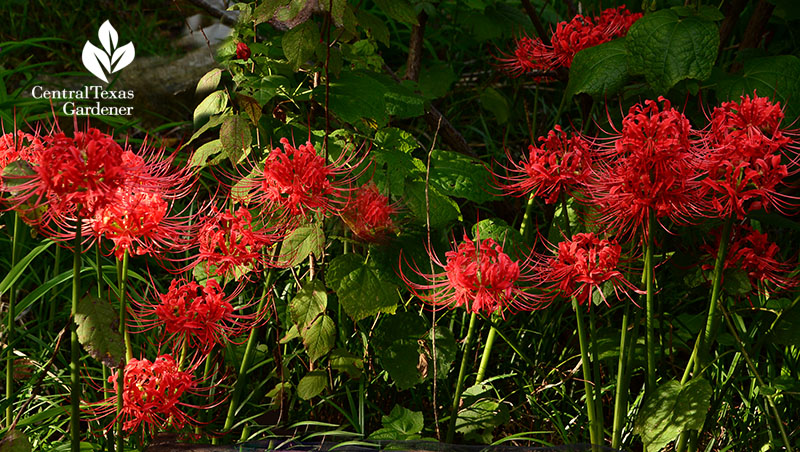
Anyway, they came with my house, and I’ve divided, moved, and shared them for a long time. I’ve always heard that Lycoris want their “feet in shade, noses in sunlight.” I know for sure that you’ll lose a year of bloom when they’re moved. It’s worth it, though, to perennialize in other part-sun spots.
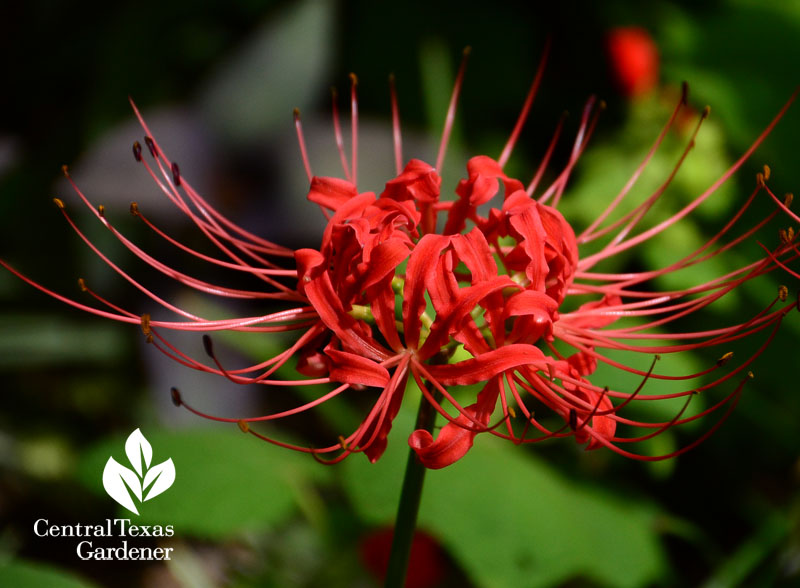
Recent years have been sparse of blooms due to drought. They really want those drenching rains in late August and early September. In fact, some have been MIA so long that shrimp plant and turk’s cap hunker over them. I’ll move the bulbs after they finish blooming.
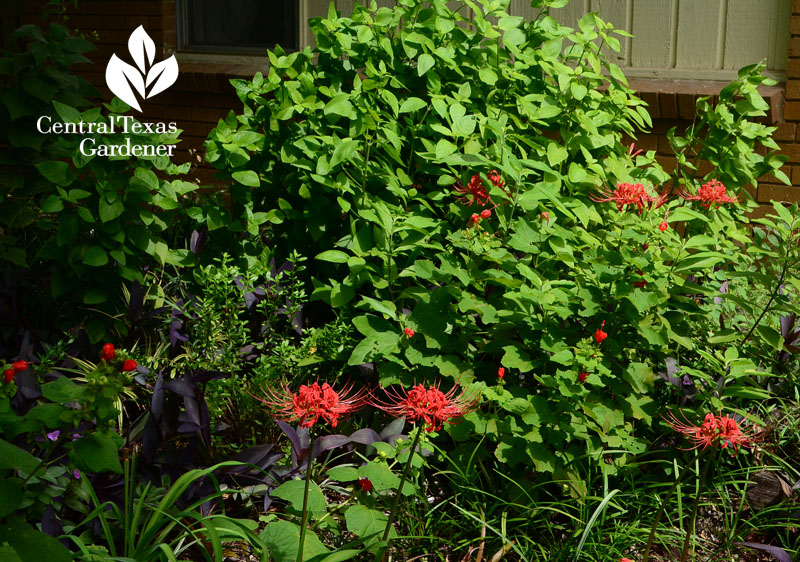
Rains prompted a bumper crop of mushrooms, too, so appreciate their mycorrhizal benefit to your soil without sampling them. Wet weather also prompts a rather alien, foamy-looking growth under trees. Donald Ray spotted this one after May rains.
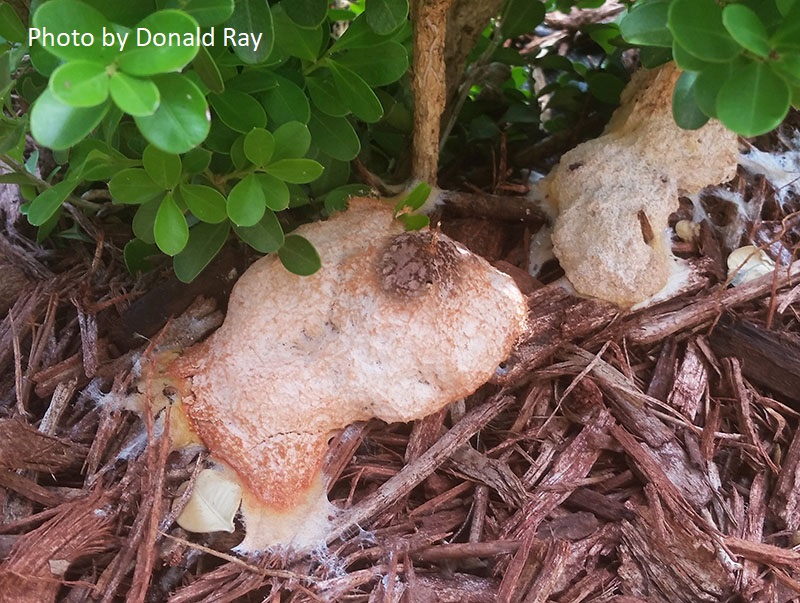
This is slime mold—sometimes called “dog vomit!” Daphne explains what it is and why it’s not harmful.
We’re still a few weeks away from wildflower seeding, since hot and dry times aren’t finished with us. New seeds need more babying, so wait until we’re really into fall. If your seed bank is already germinating (as certainly are the “weeds”), do water when the rainfall spigot turns off.
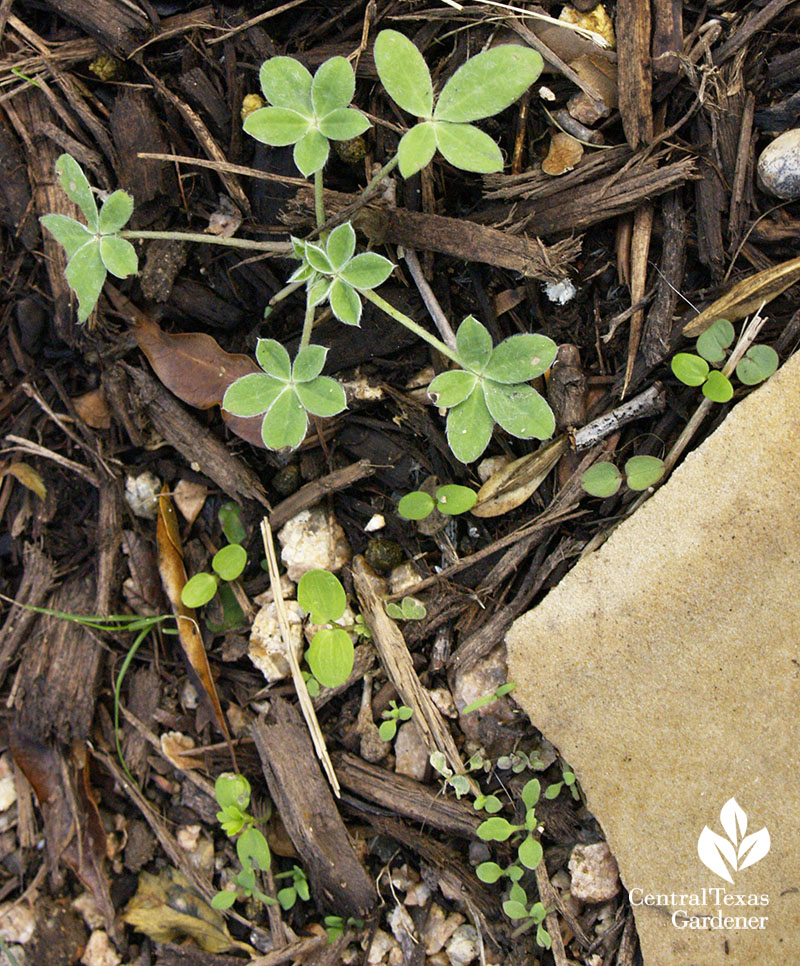
But fall vegetables are calling our names! Designers Leah Churner and Colleen Dieter (also co-founder of the the Central Texas Seed Library) team up to show you how to start lettuce seeds. One secret: don’t plant them too deeply!
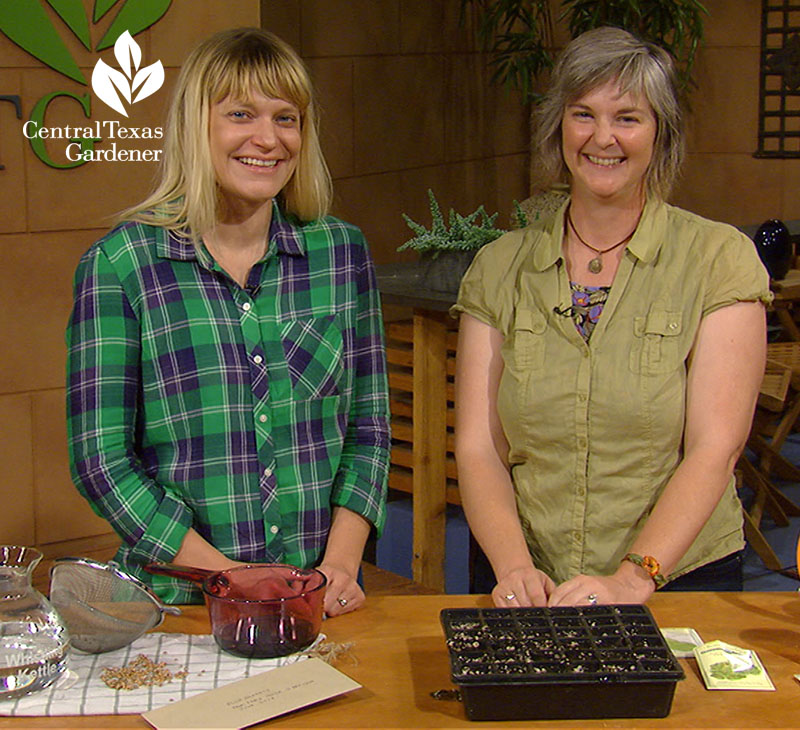
In fact, I started mine in peat pots last weekend on my bright shade patio until they’re big enough to go into the ground (they’re already up!). Colleen brought seed packets of Butterhead and Flashy Trout Back, two of my favorite lettuces, along with Black Seeded Simpson, Salad Bowl, Tango, Parris Island Cos (a Romaine) and Buttercrunch (a Bibb). I’ll also sow directly into the ground but recent Octobers have been so weather-tricky that this is my safety valve.
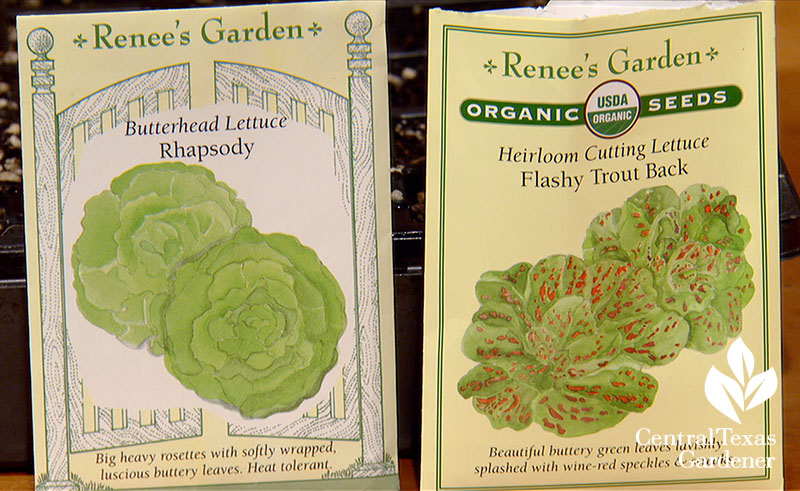
For wildflowers to come, Leah explains why she softens up bluebonnets’ hard seed coats with boiling water instead of scarifying.
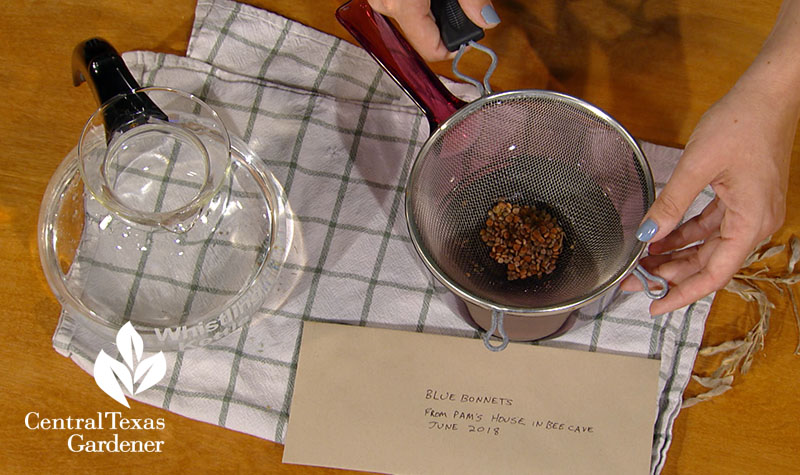
Nature takes care of scarifying bluebonnets when burst seeds get roughed up in summer. For best success, we have to lend a hand the first time around. Watch now!
Note: now’s a good time to plant another nitrogen-fixating legume: peas. Last Saturday, I soaked sugar snap seeds overnight and thumbed them into moist soil on Sunday. I hope mine grow up big like these at Crockett High School.
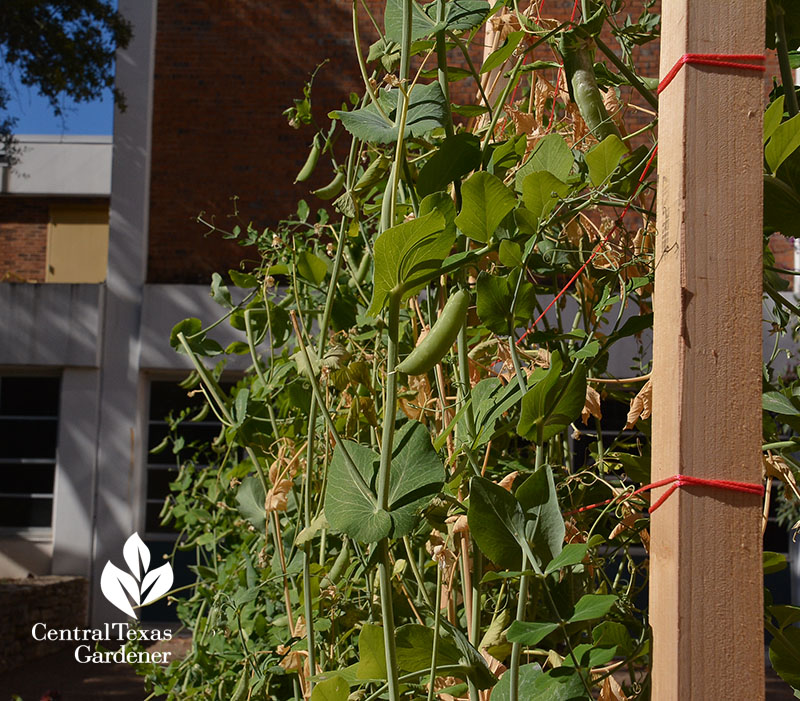
Since winter is the easiest season to grow vegetables in Texas, Jay White explains how to transition from summer to cool weather crops like greens, carrots, radishes and cole crops like broccoli. Watch now!
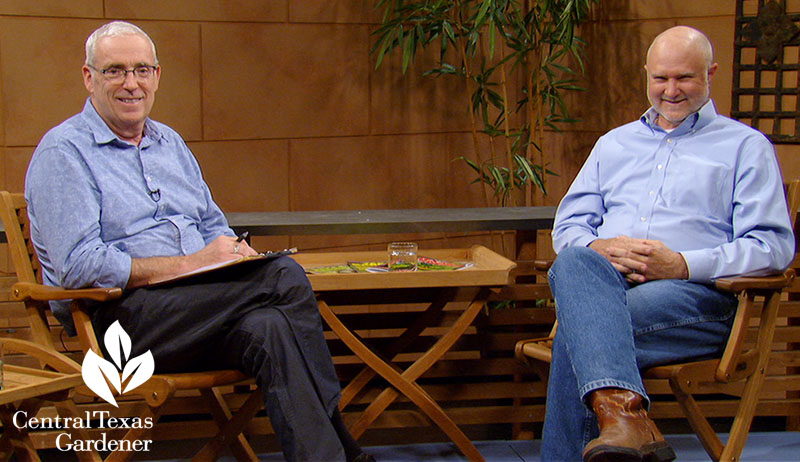
Your Extension office will have a planting calendar and best varieties. Here’s Travis County’s Extension guide for Central Texas.
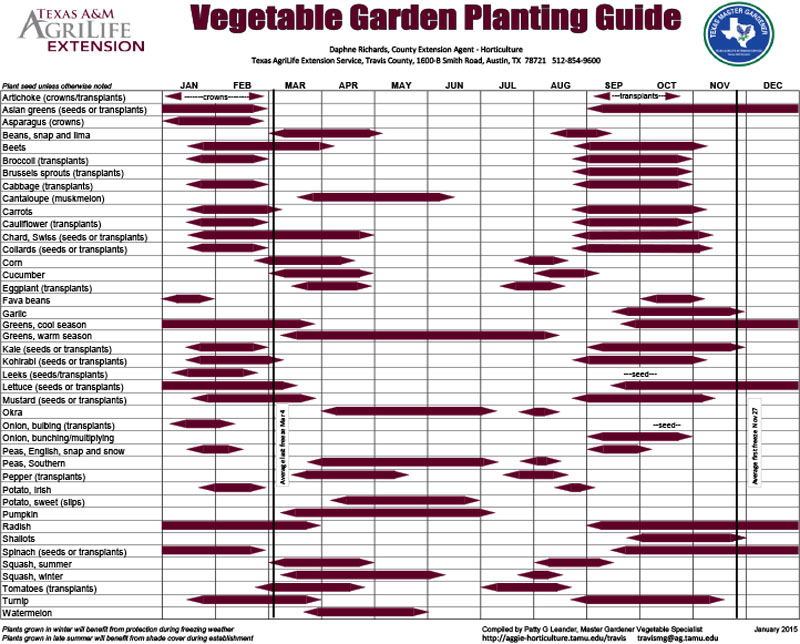
I’ve known Jay and his wife Sally since 2012 when Chris Corby, founder of Texas Gardener magazine, suggested I visit their potager in Brenham. Here’s our archival video, but the garden’s changed so much, we’ll be back.
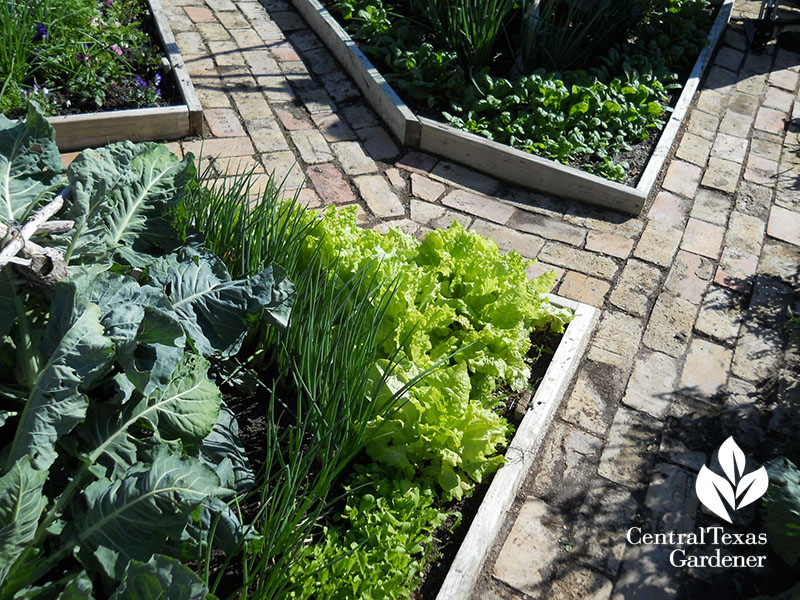
In August, Sally and Jay accepted the ultimate passalong as new owners of Texas Gardener. They’ll continue growing TG’s great info and superb writers with boundless passion and expertise.
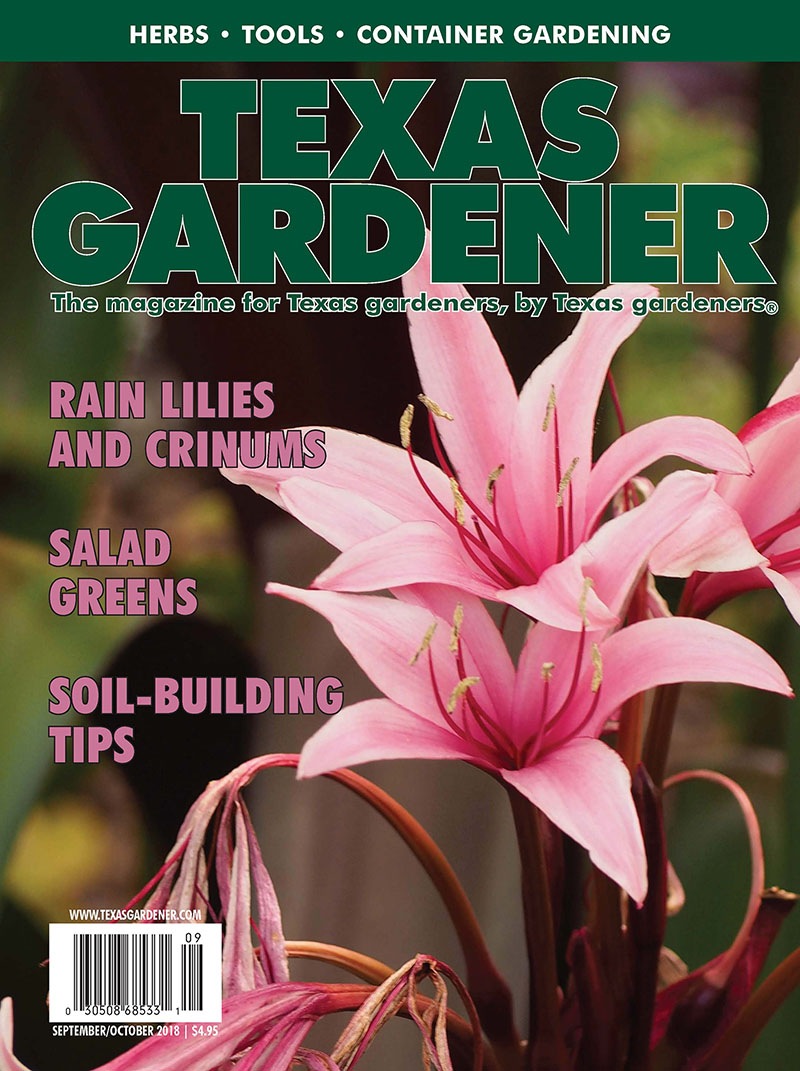
So, if you’re not already exhausted with fall’s to do lists, here’s one more: divide and fertilize your bearded irises.
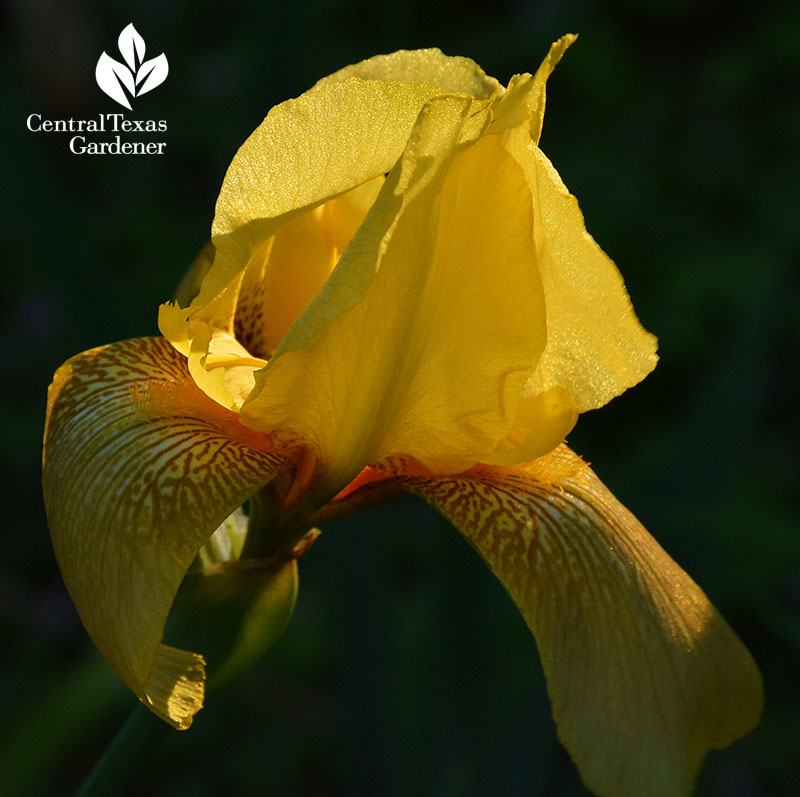
If blooms have been MIA in recent years, it’s not lack of water. In fact, bearded irises are very drought tough and will rot with wet feet. Crowding is the problem.
Depth of planting matters to seeds. Depth of field matters to the story we tell with our cameras. North Carolina gardener and photographer Tonya Peele from plant + shoot explains how depth of field puts your focus just where you want it.
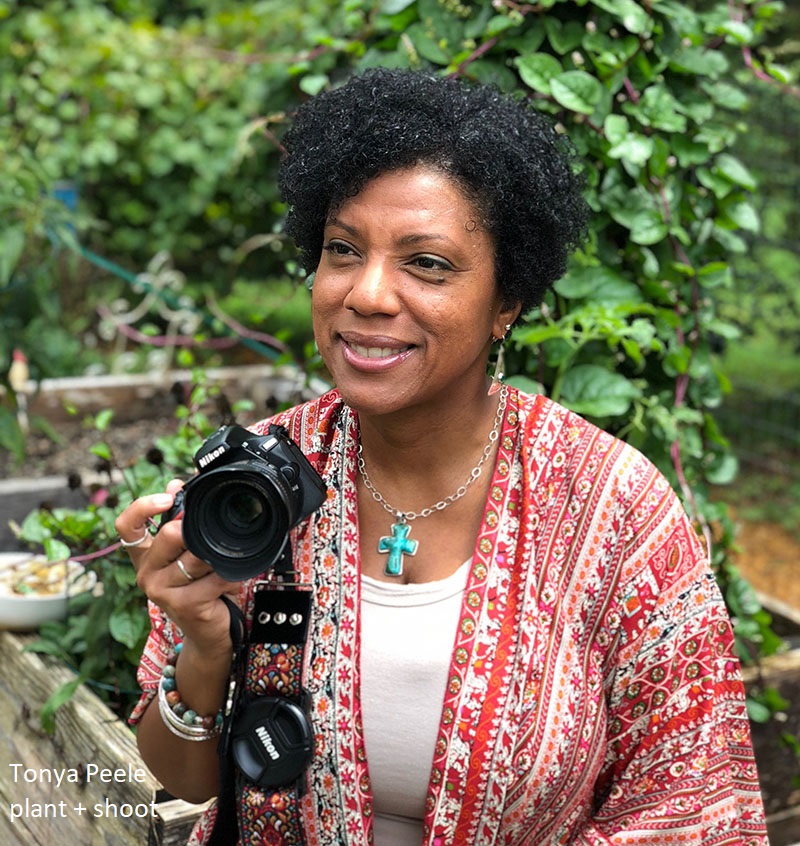
In this picture, she used a wide aperture, small f-stop number (f/2.5), to spotlight her lettuce. Watch now!
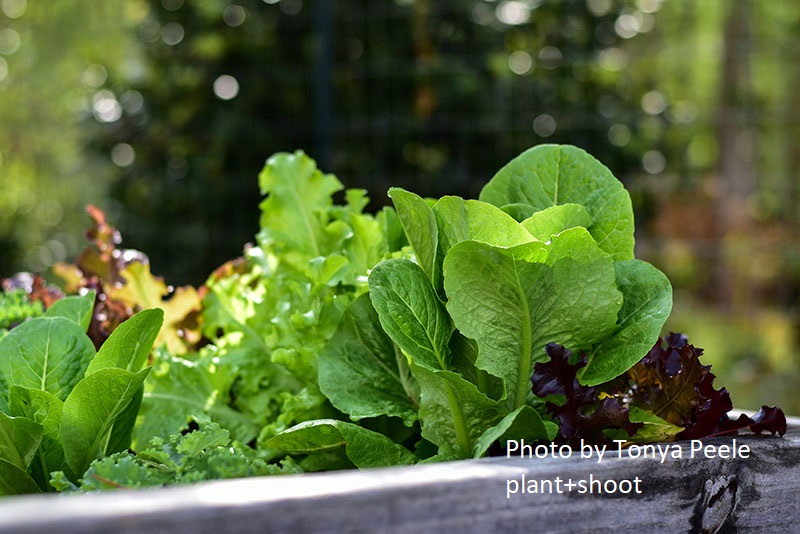
Many factors determine depth of field, but director Ed Fuentes took examples of aperture-preferred setting. He used f/1.7 (wide aperture, small f-stop) to put the background out of focus.
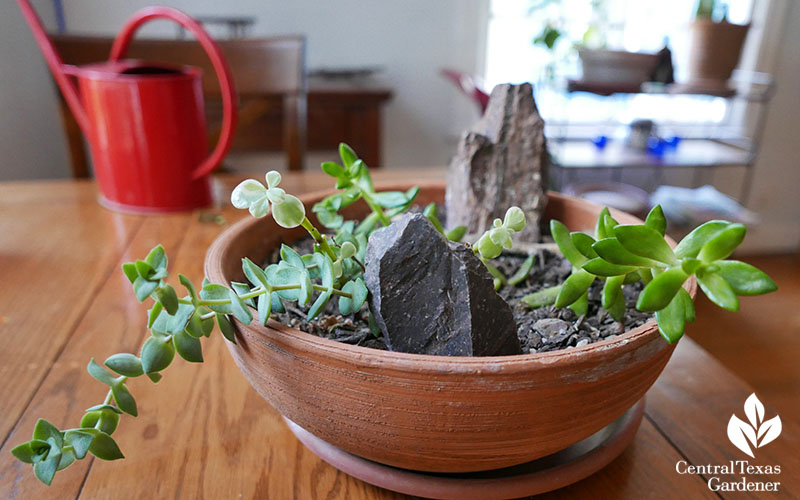
To put it all in focus, he chose f/16 (small aperture, large f-stop).
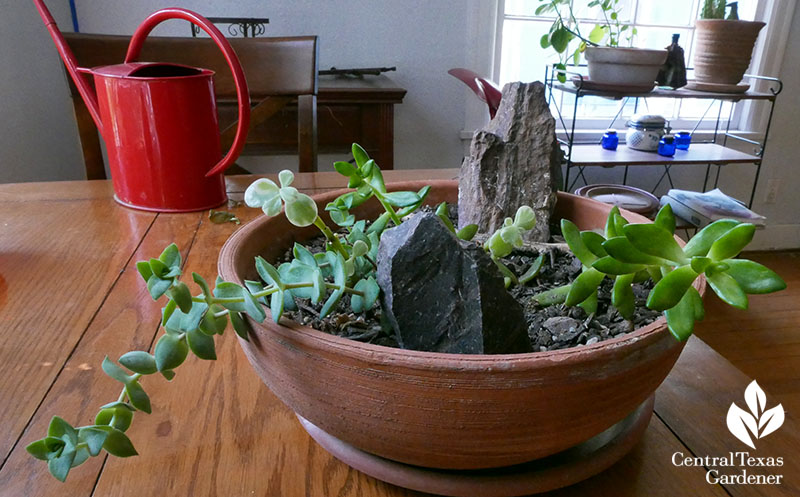
On tour, Jennifer Edwards turned a dowdy yard into an artistic and sentimental voyage. “My friends would say that I’m not a minimalist. I’m an artist at heart, so I’m always creating,” she tells us.
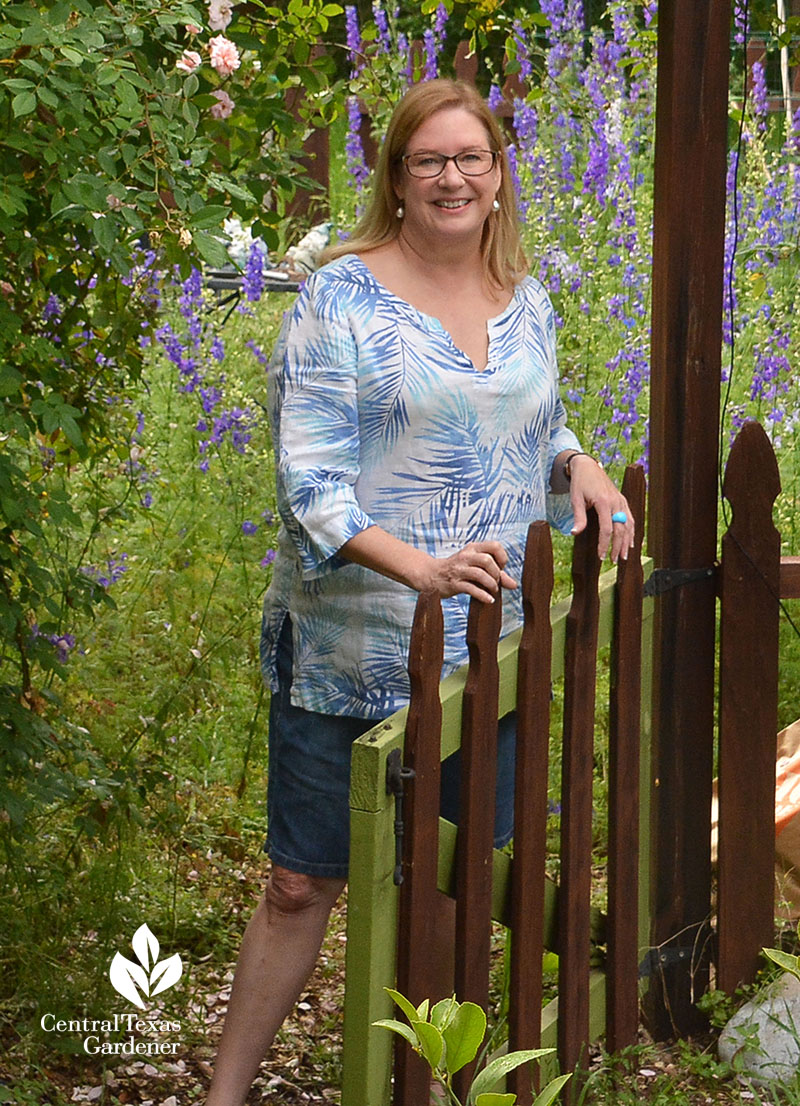
Practical issues came first, especially flooding against the house.
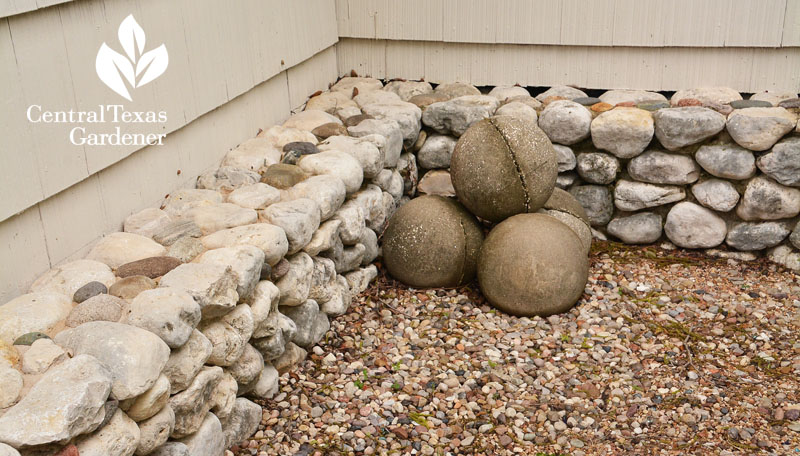
After exchanging water sloughing bricks for decomposed granite, stone guys built a protective wall and French drain. Her friend Steve formed concrete balls for aesthetic interest that deflects rainwater.
Jennifer hung a rain chain, too.
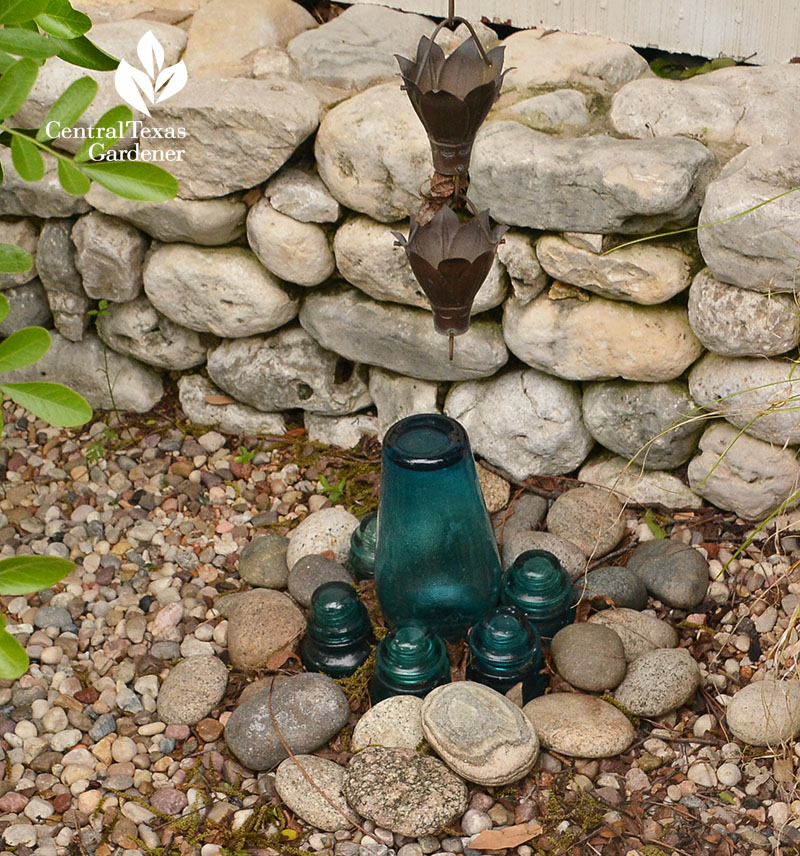
At its base, she tucked a flea market vase and electrical transformers into stones to slow down rainfall. She’s always quick to snag accents in turquoise, green, blue or lavender for “evergreen” uniting color.
She picked up the color theme with a metal saucer tripod planter she lucked into on Craigslist.
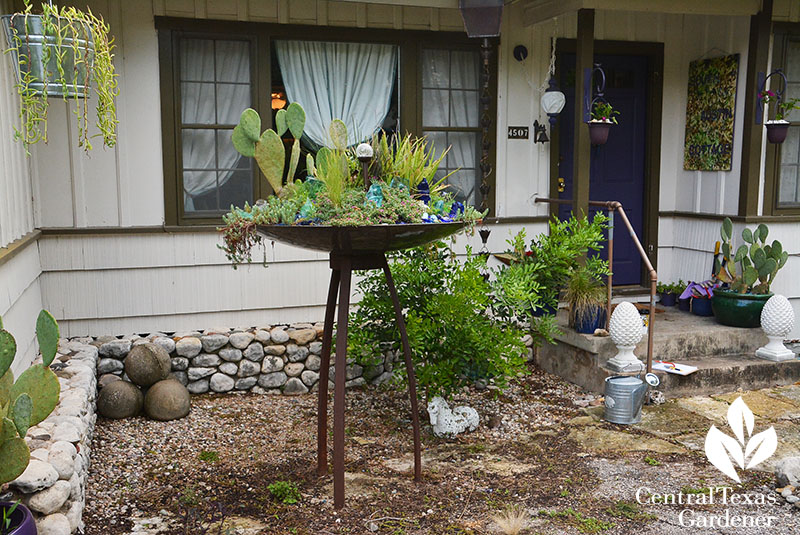
It uplifts the front door cove and her view from inside.
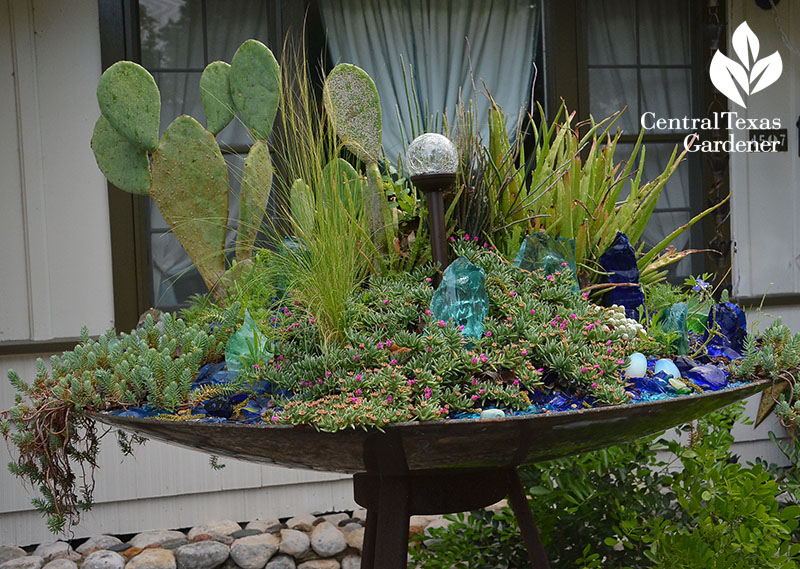
A flagstone path winds through an inviting collection chosen for fragrance, structure, or color.
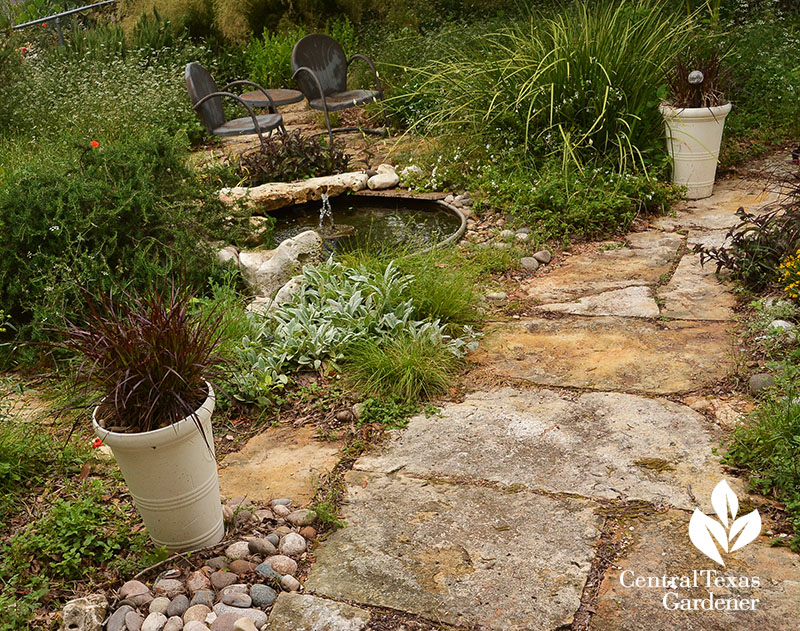
You’ll often find her or the neighbors hanging out at the sunken stock tank pond, though she did it mostly for wildlife.
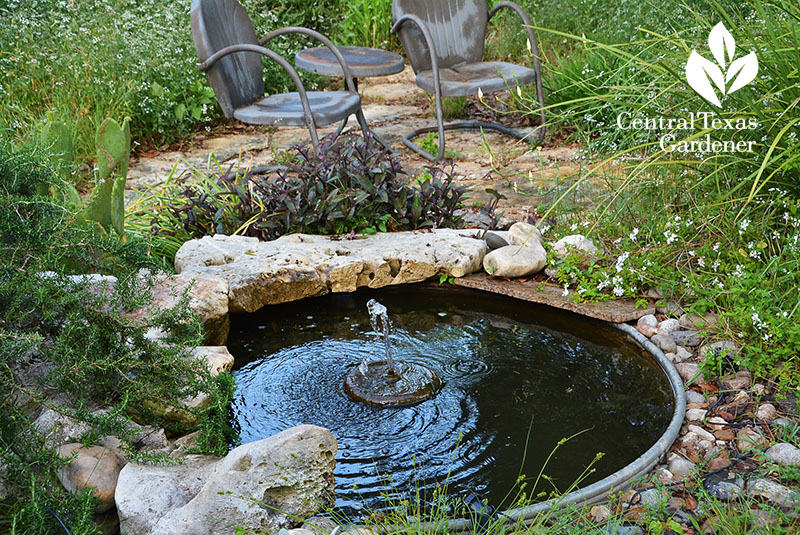
In back, she and son Julian built a farm-like fence to corral vegetables and flowers against orderly lines of fruit trees, inspired by her grandpa’s orchard. When he died, she carefully took cuttings of a fig tree and grapevine which thrive in her garden, along with her memories.
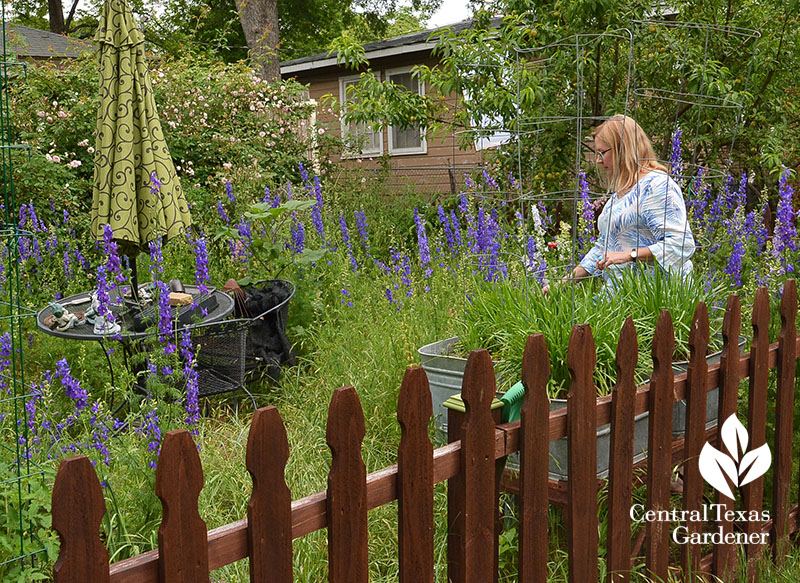
She’s also sentimental about larkspurs, poppies, and spiderworts that she’s collected over the years to plant lifelong connections whenever she moves. Seasonal crops rotate in small galvanized containers drilled for drainage.
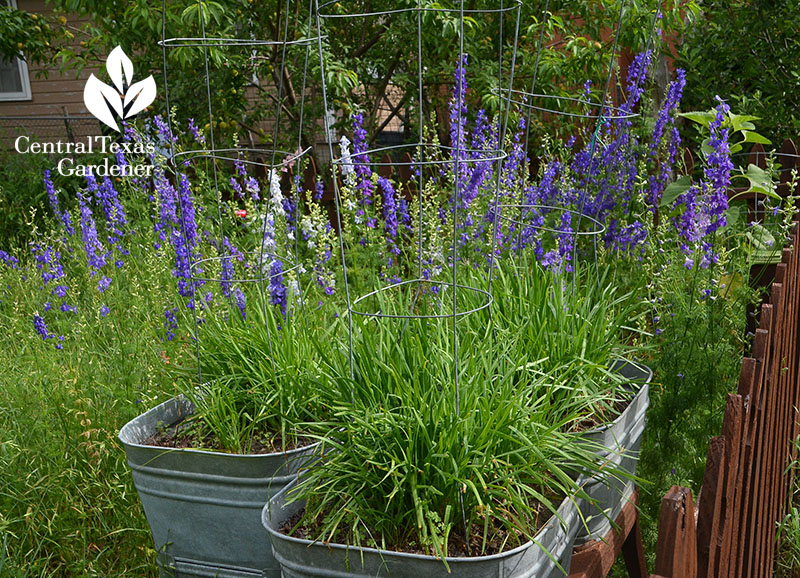
Jennifer finds a way to re-use anything that comes her way, like a bamboo shield for her self-made shower and inimitable philosophy painted onto lumber scraps.
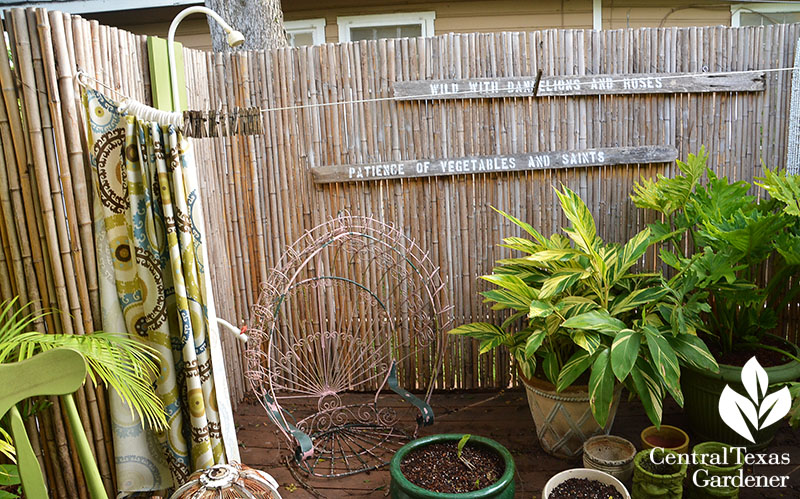
An advocate of community literacy, she built a Little Free Library on the front curb that’s encouraged lots of conversation with the neighbors as they chat about the garden. And perhaps The Great American Read voting!
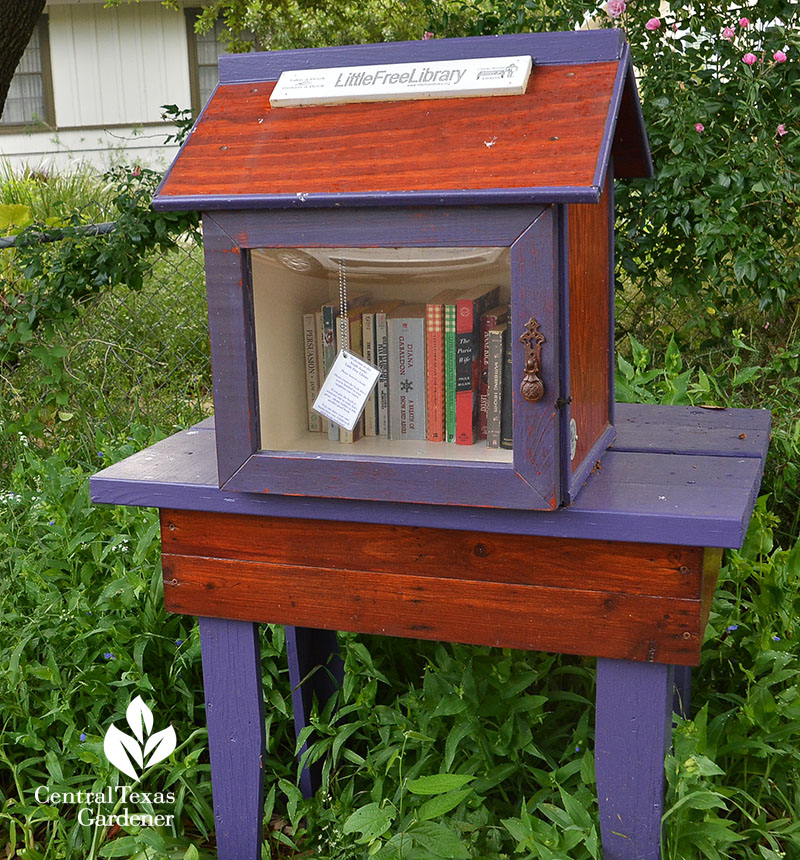
Meet Jennifer right now!
Thanks for stopping by! See you next week, Linda







